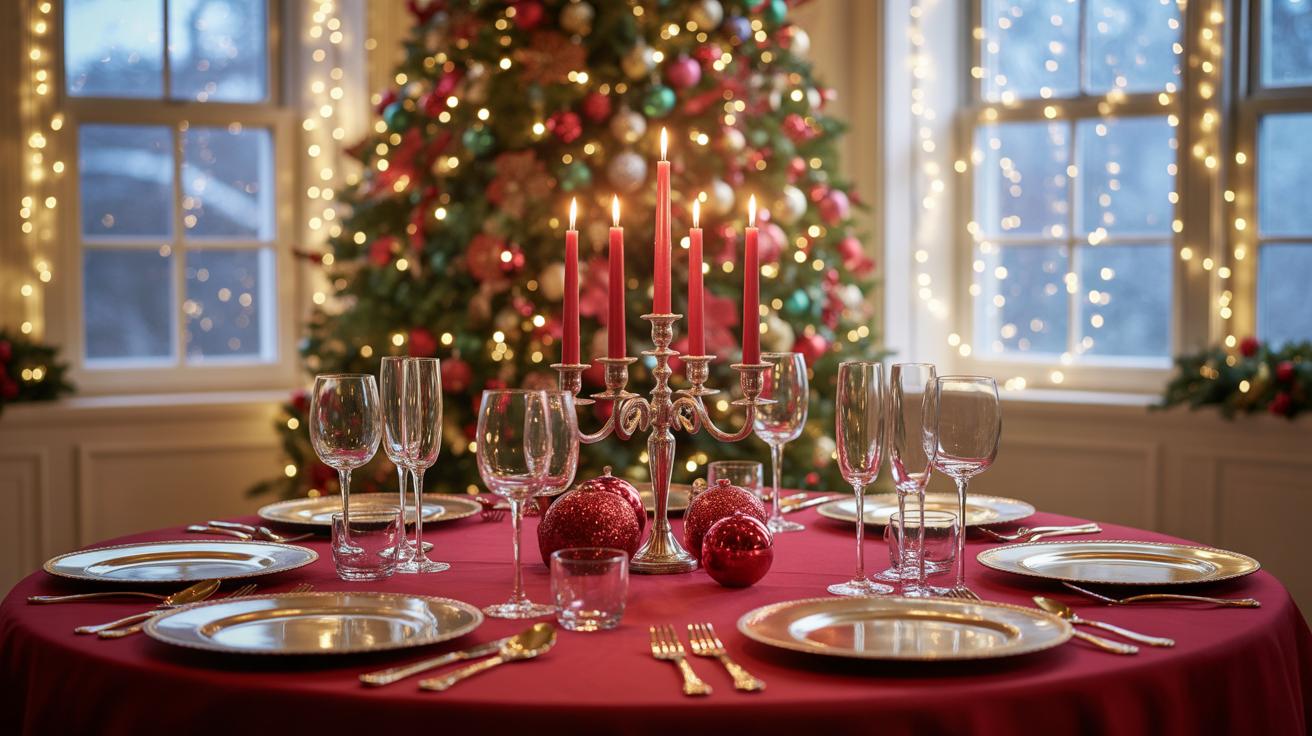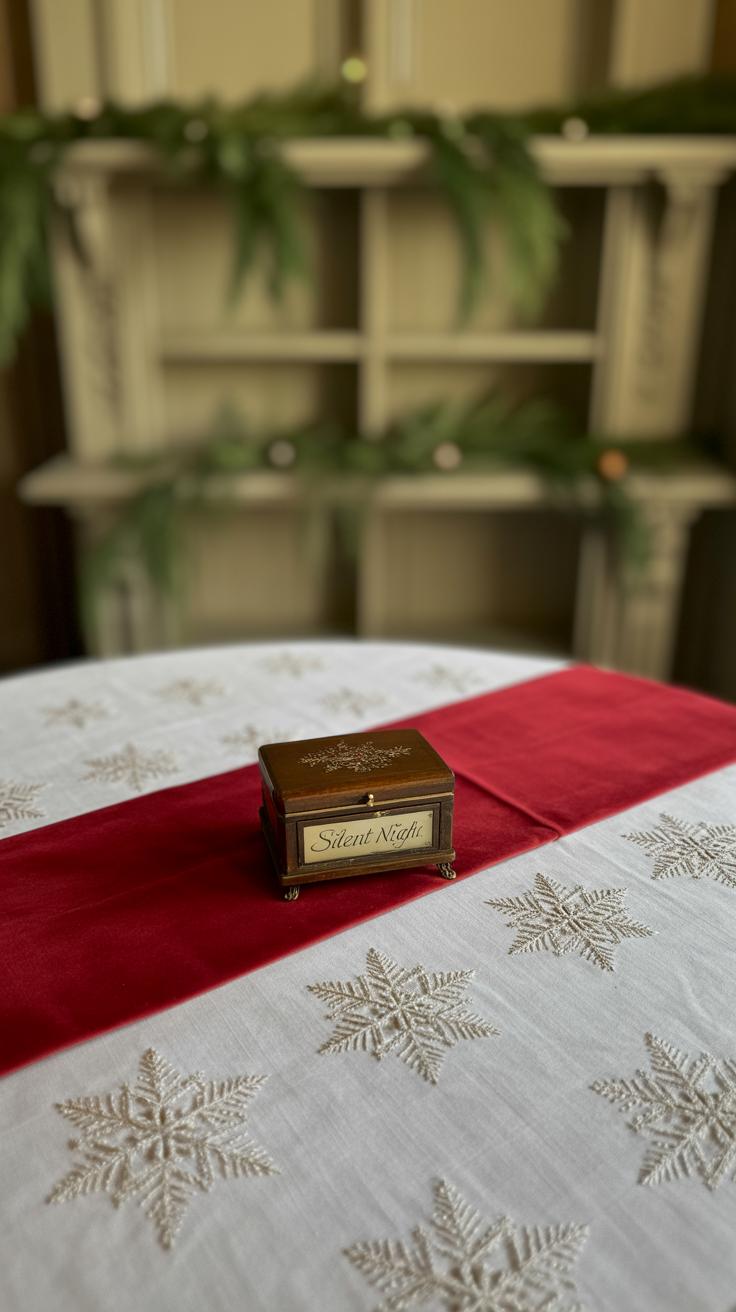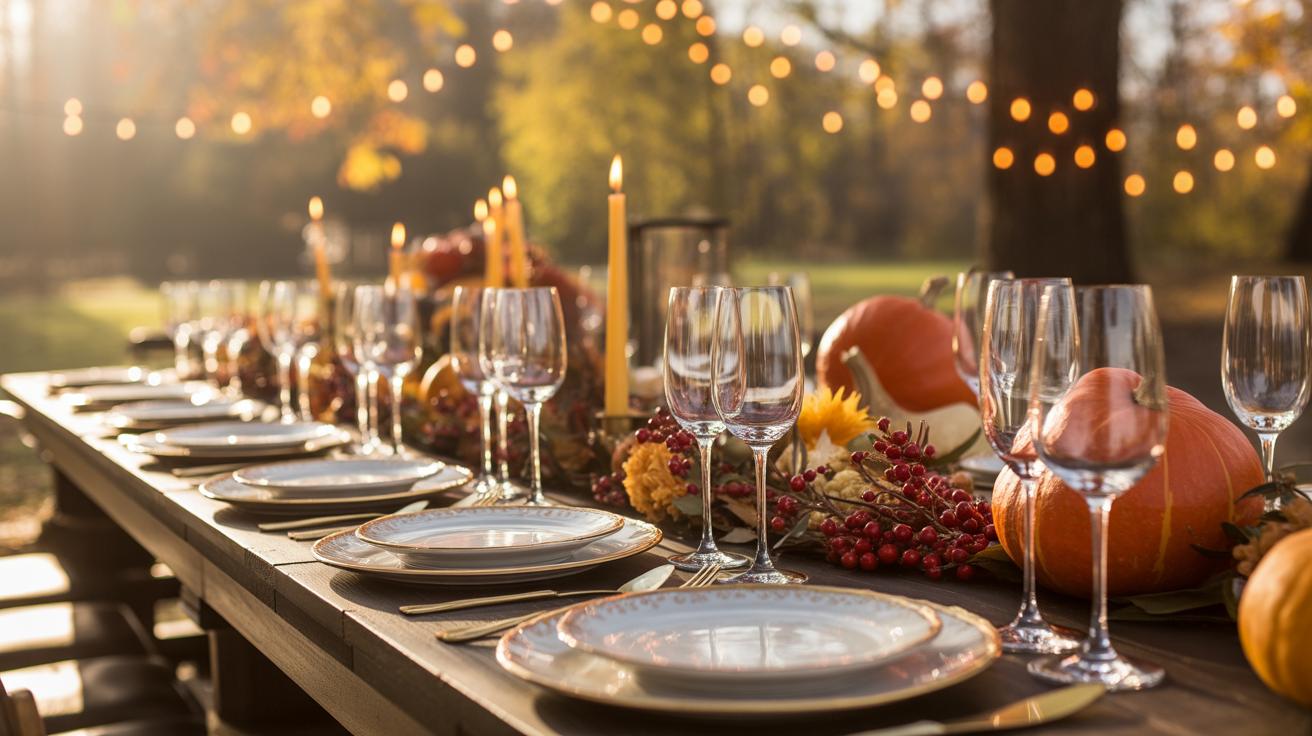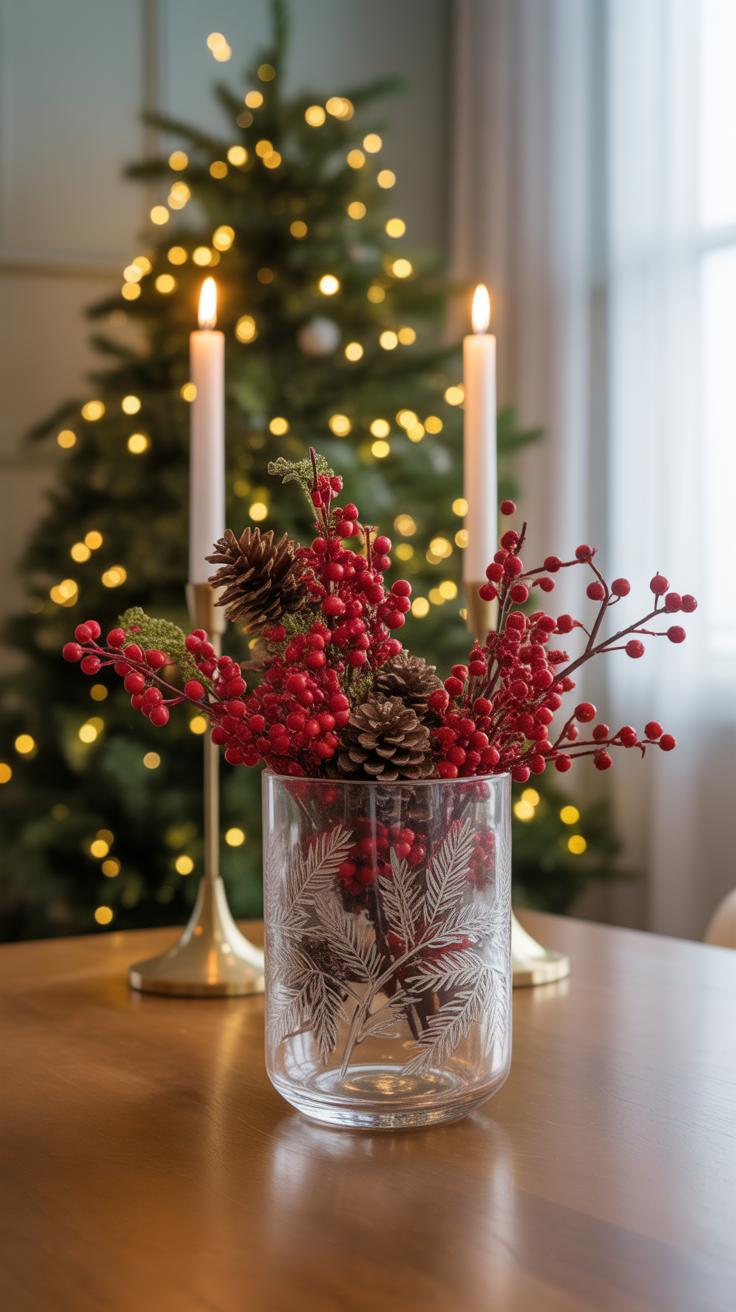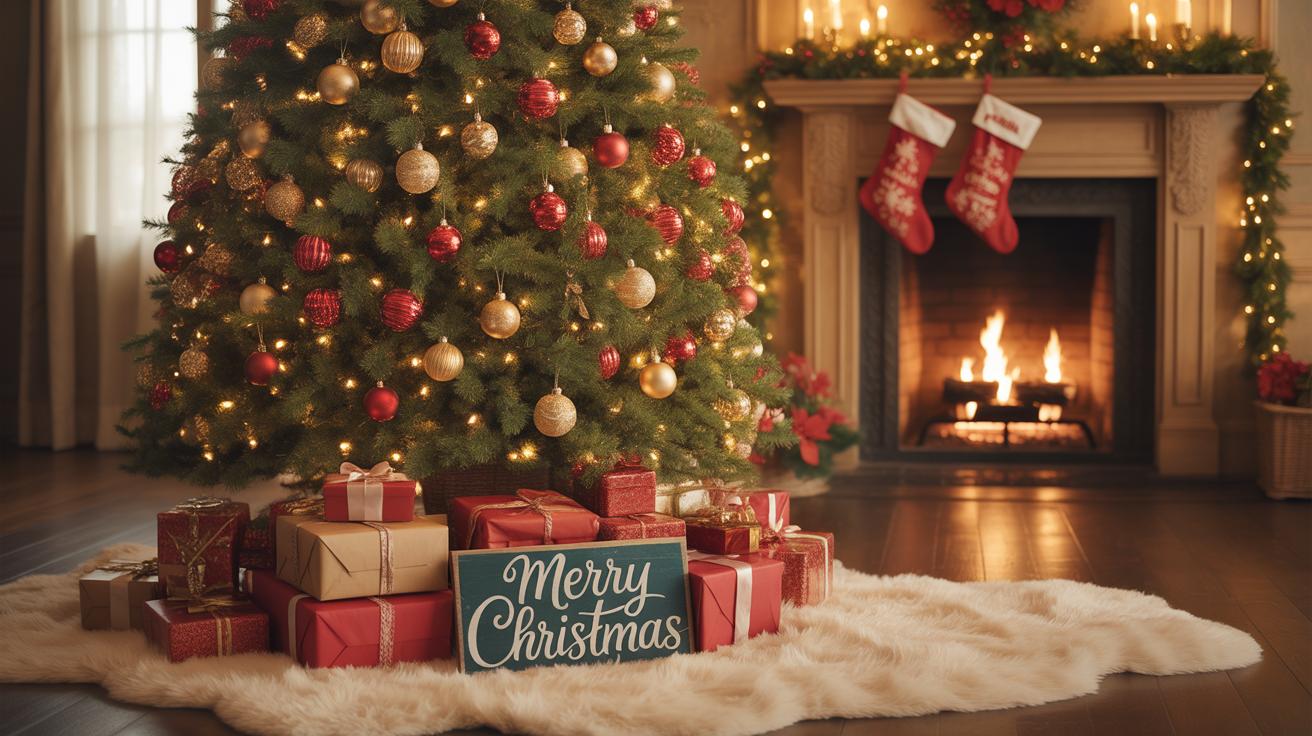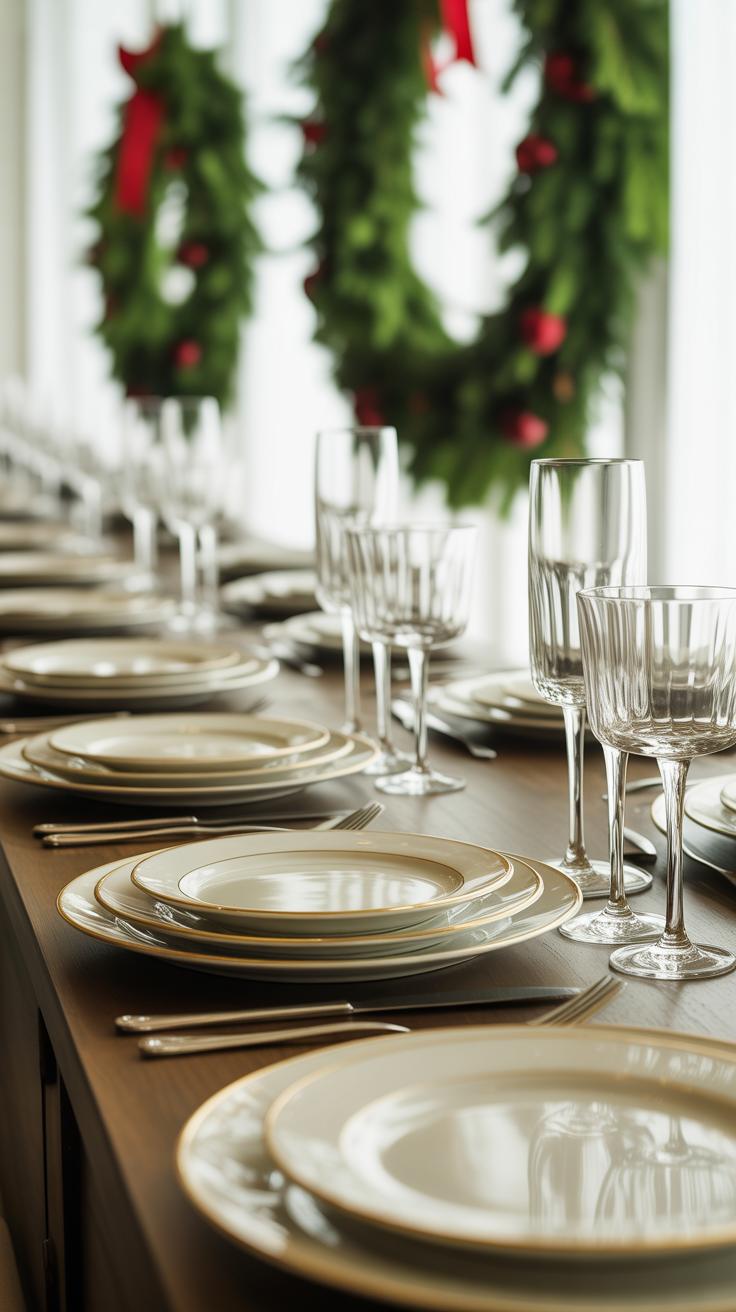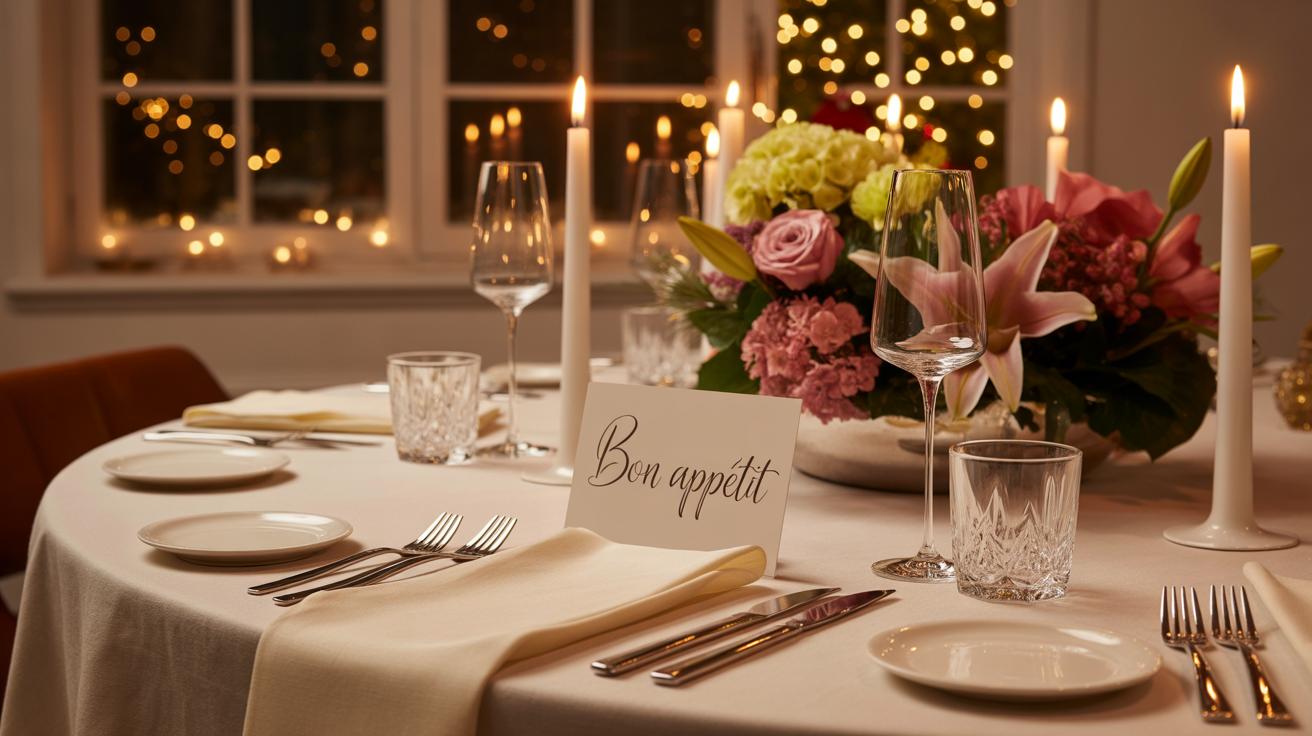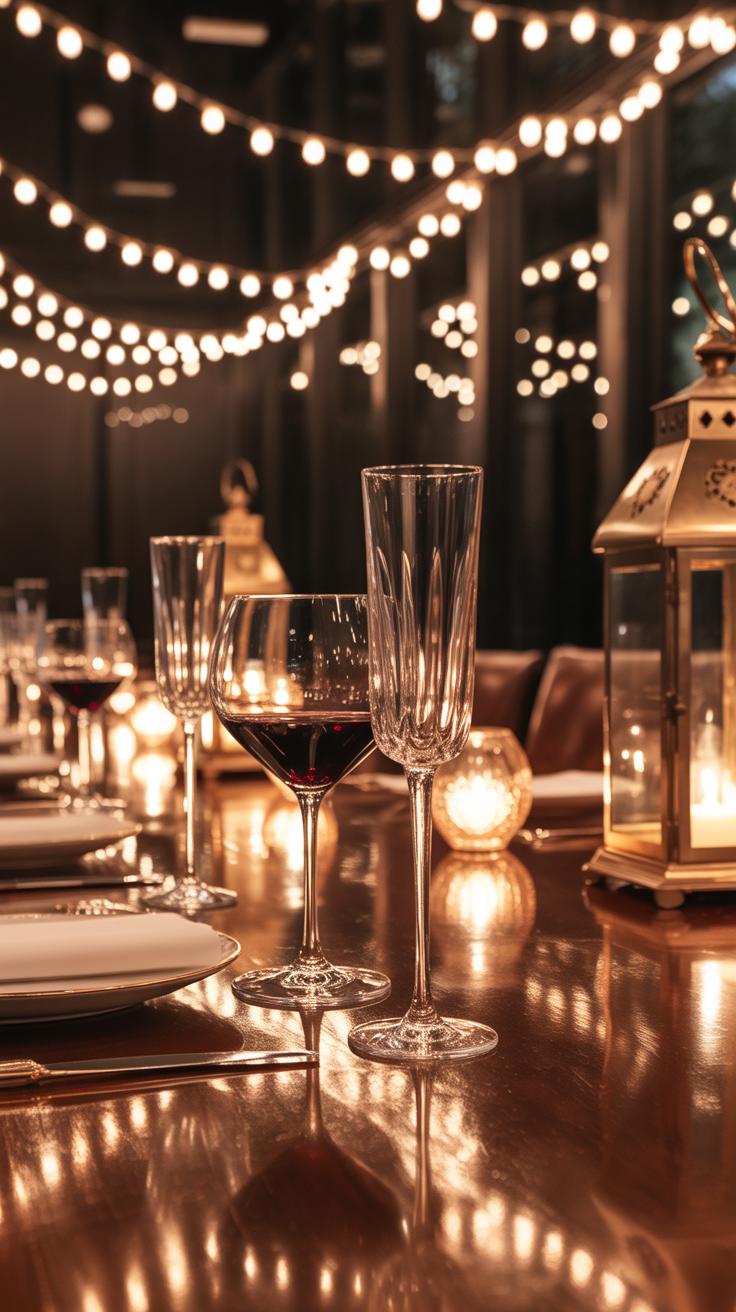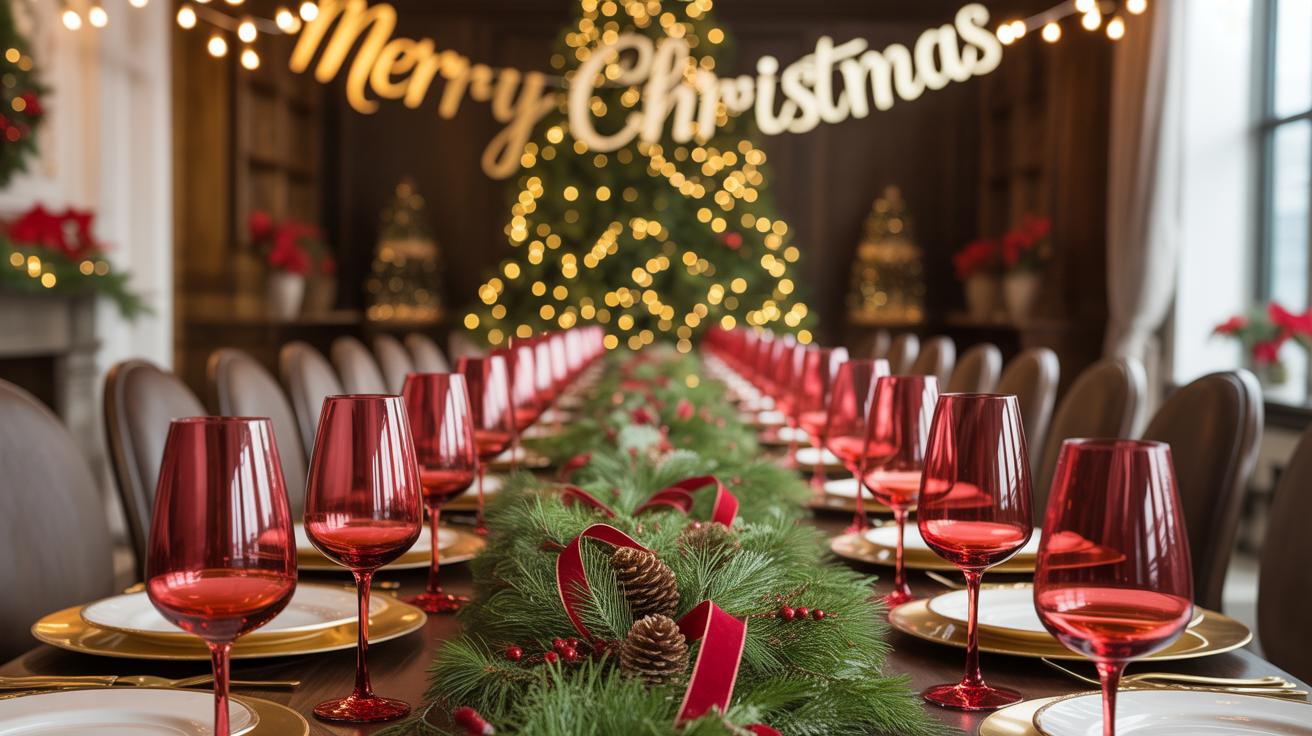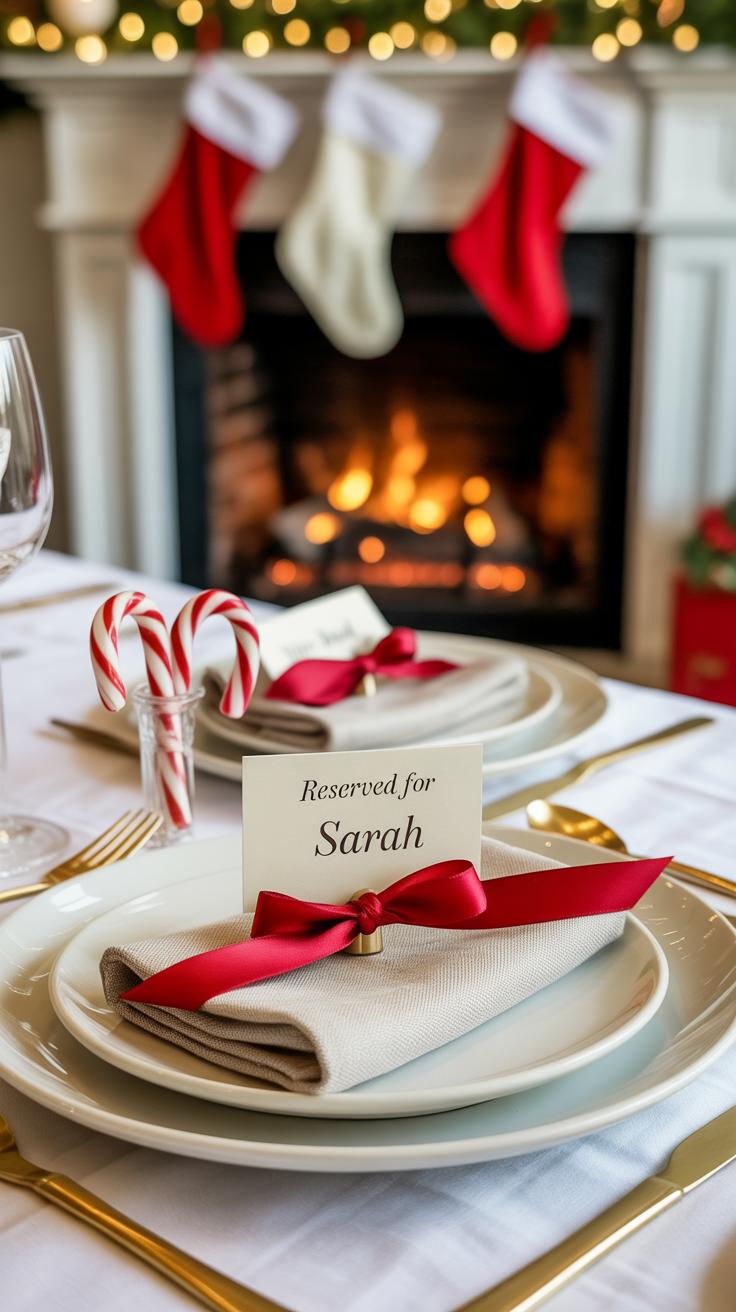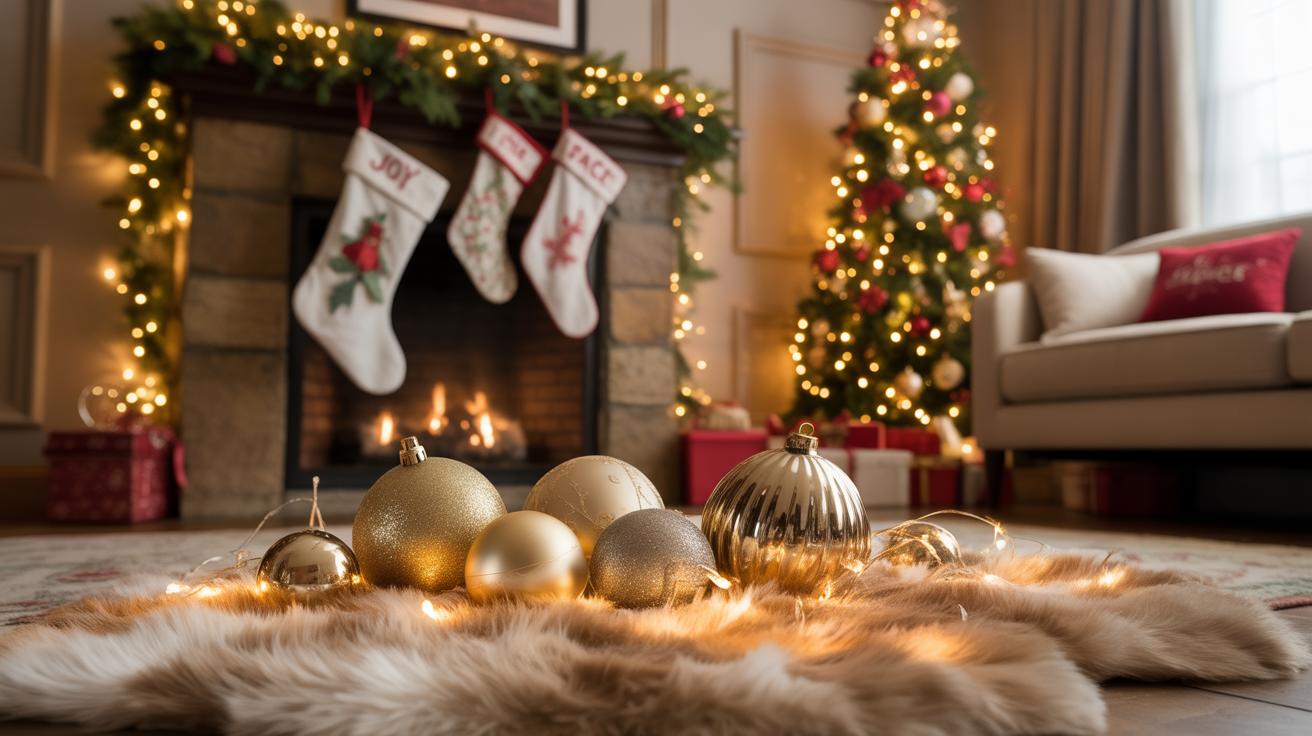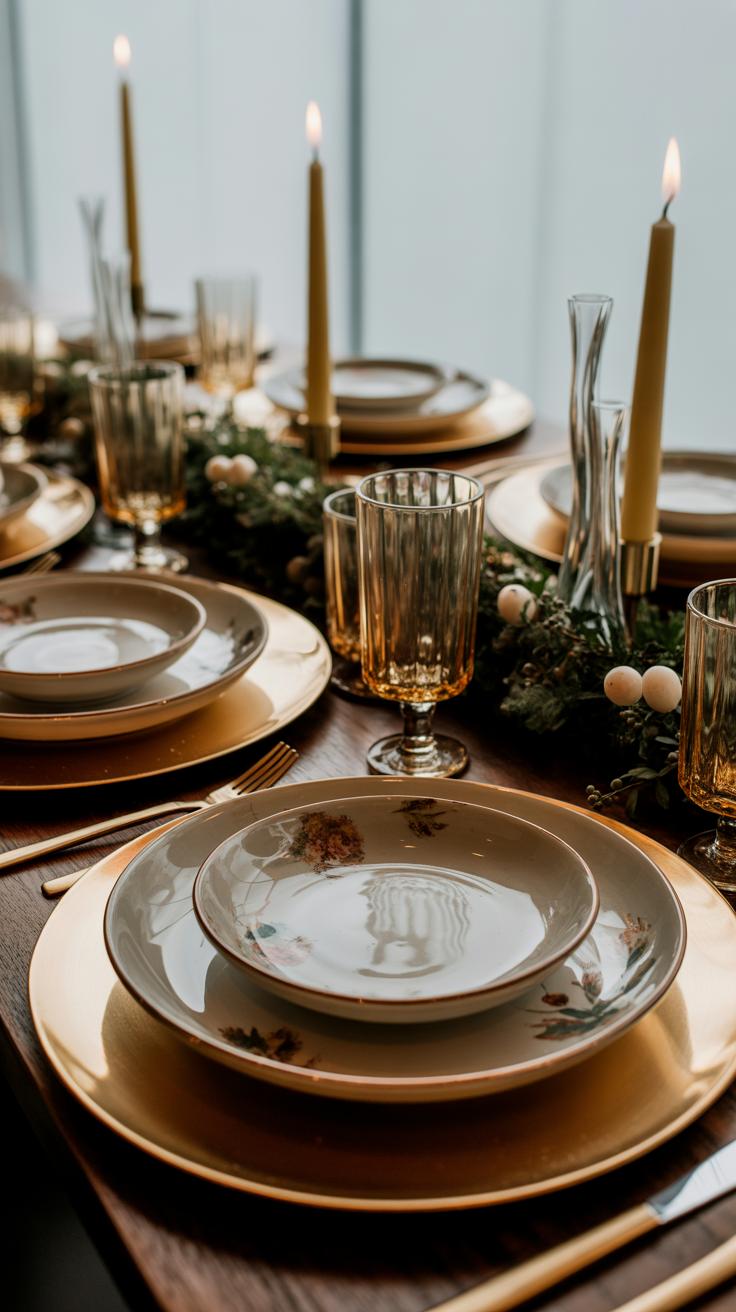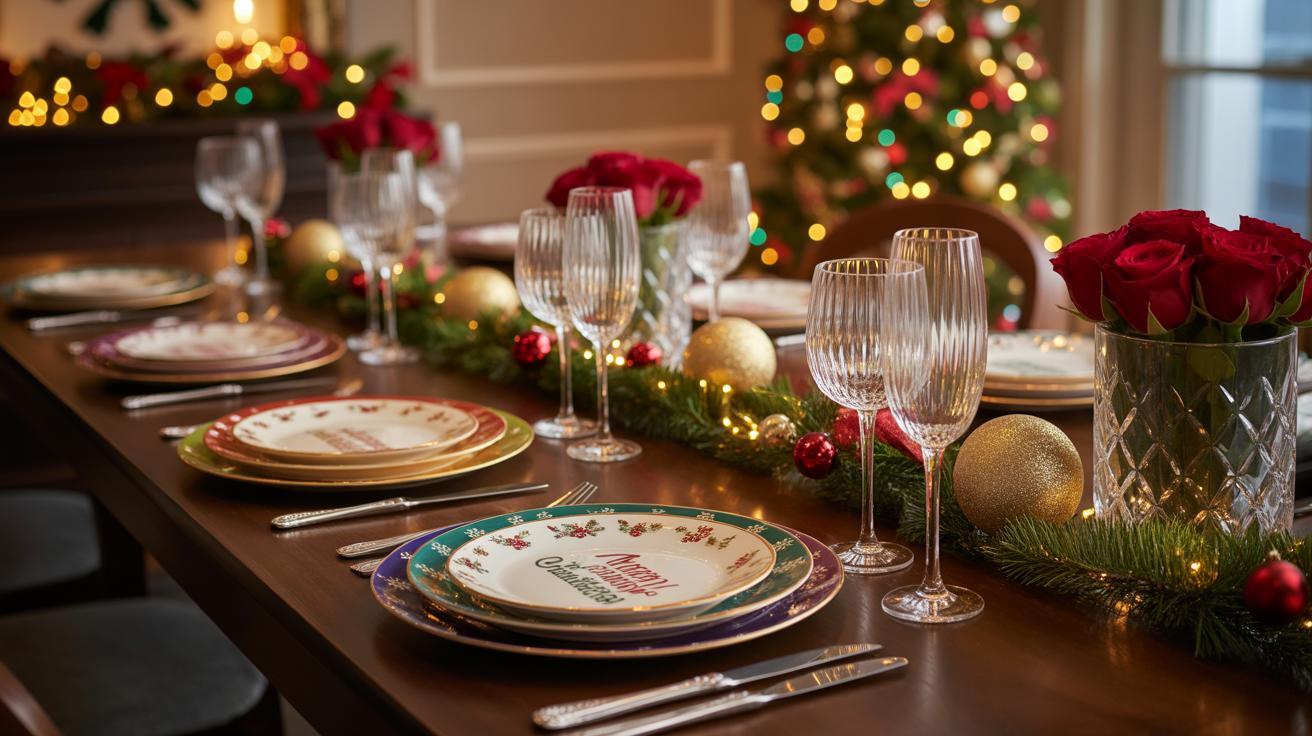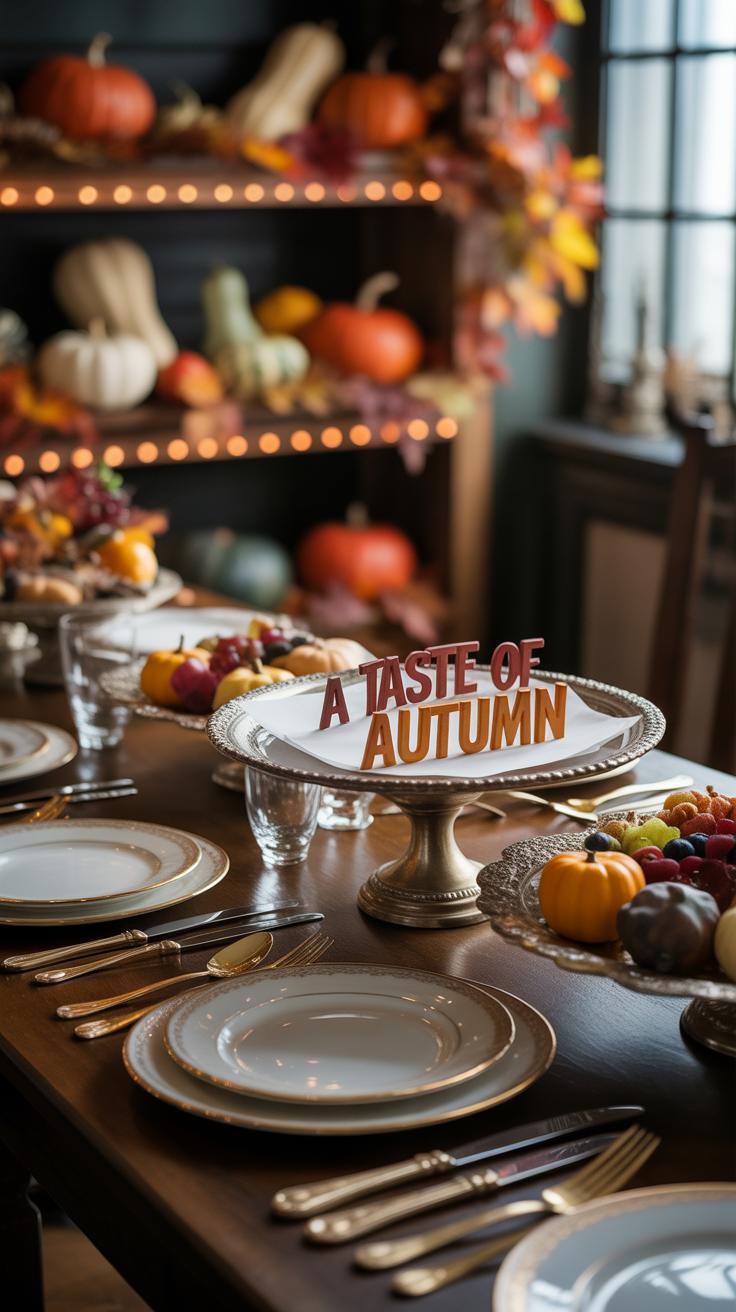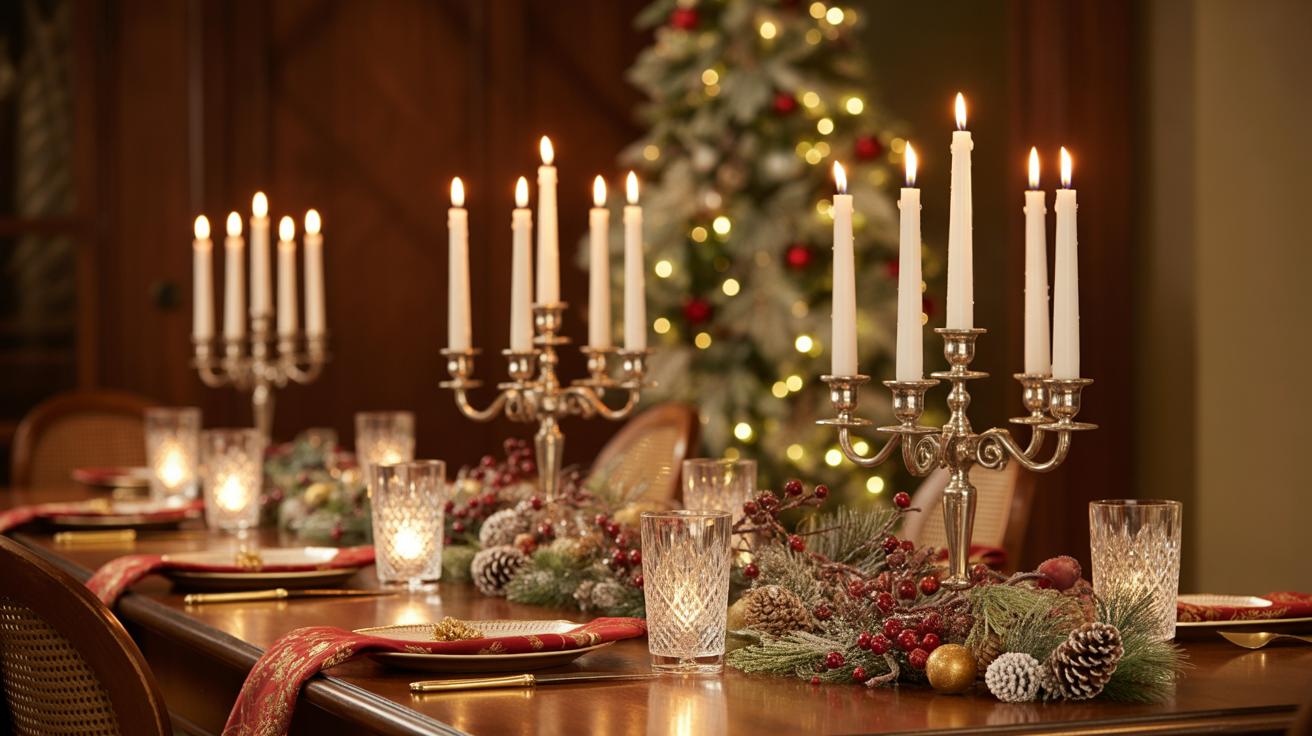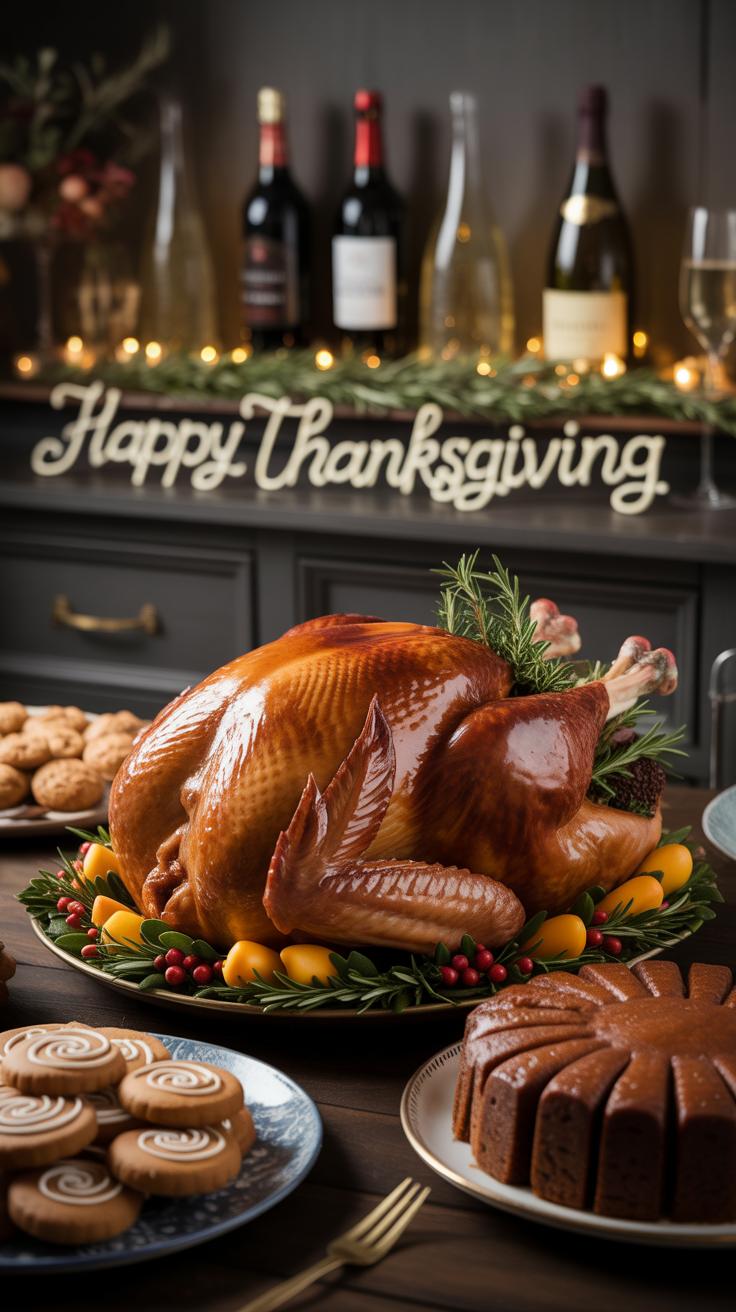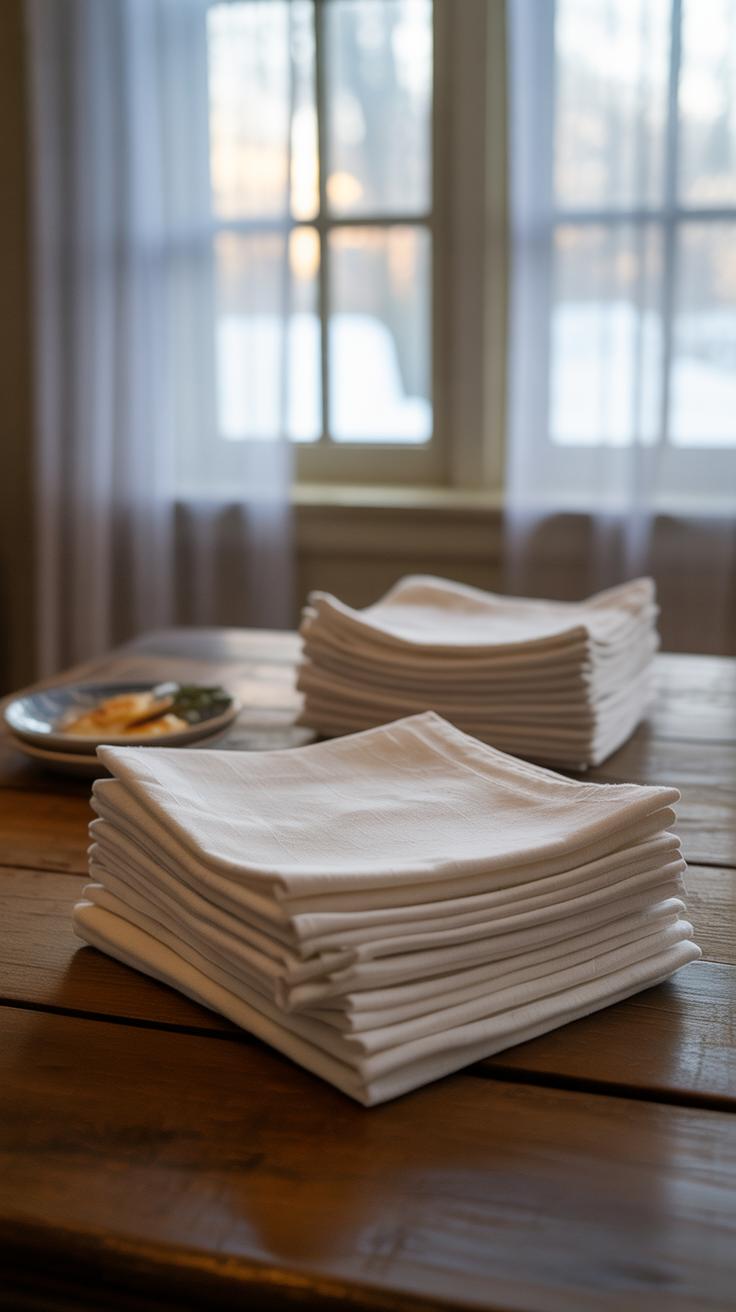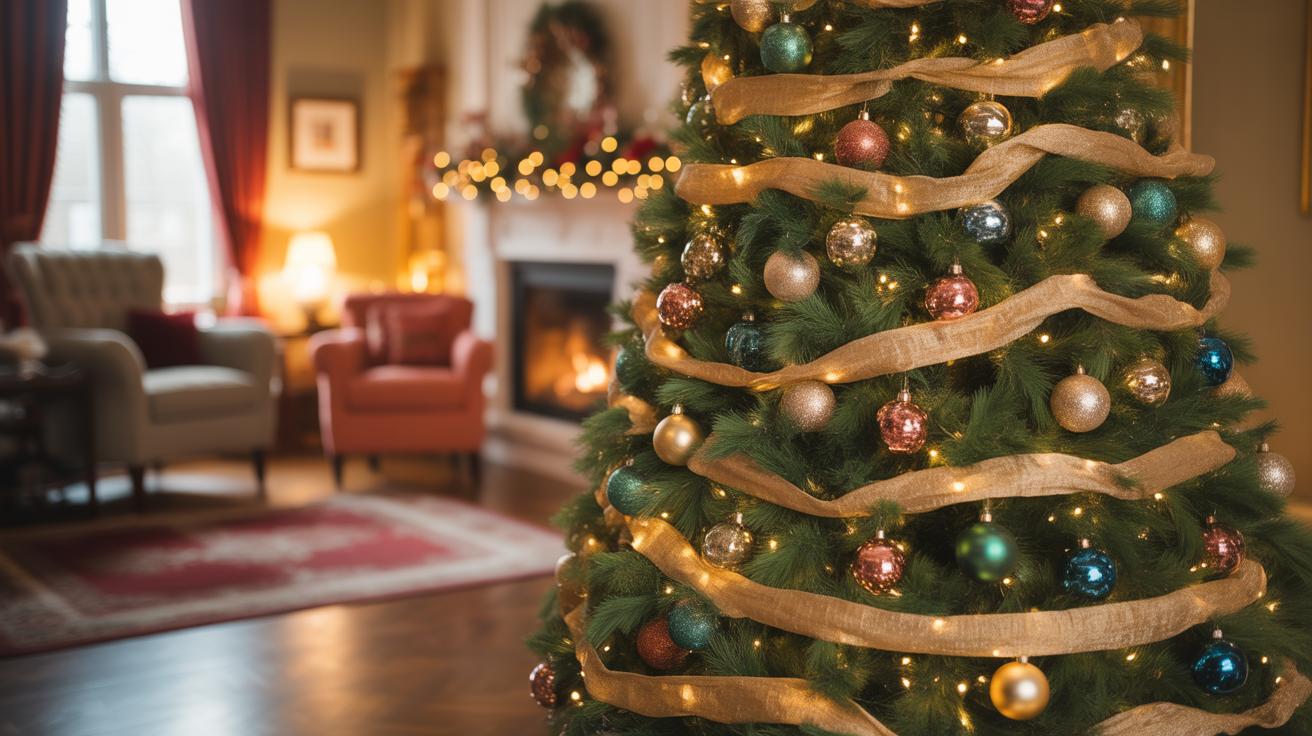Introduction
Christmas dinner marks a special time when families and friends gather to share a meal and celebrate. The Christmas Dinner Table Ideas To Elevate Your Feast offers a chance to make this moment even more memorable. Your table setting can set the mood and enhance the joy of the holiday gathering.
Simple touches to your Christmas dinner table—from decorations to tableware—can make a big difference. This article will guide you through ideas for decoration, setting, and meal presentation. You will discover practical ways to bring warmth and style to your holiday feast.
Setting The Foundation With Table Linens
Choosing the right tablecloth is almost like picking the stage for a play — it sets the mood and the overall vibe of your Christmas feast. Think deep reds, forest greens, or creamy whites as classic festive shades that never feel out of place. If you want something a bit different yet still seasonal, try muted gold or silver tones. The material matters too; cotton or linen offers a natural, cozy feeling, while velvet can add a touch of warmth and luxury. I’ve found that a slightly textured fabric, like a woven cotton blend, often feels more inviting than something too slick or shiny.
Table runners are the subtle language of design that tie everything together. Whether you go for a contrasting color or a patterned runner—like plaid or gentle holly prints—they help break up the expanse of the tablecloth, adding layers without overcrowding. Sometimes, a burlap runner works well for a rustic touch, though it’s not everyone’s cup of tea—its roughness can feel a bit too casual, oddly.
Napkins offer a small but powerful opportunity for creativity. Folding them simply into rectangles or triangles is fine, but why not try a pocket fold to tuck in cutlery, or roll them tied with twine or a sprig of rosemary? Napkin rings or handmade holders—like cinnamon sticks bound with ribbon or mini wreaths—can bring neatness and charm. They don’t have to be expensive; even paper rings with hand-drawn designs can feel personal and thoughtful.
When you pick linens, ask yourself: do these colors and textures make you want to linger at the table? Sometimes I’ve gone for something safe but regretted missing the chance for a little more warmth or whimsy. Don’t be afraid to mix patterns slightly—perhaps a plaid runner over a plain tablecloth—just enough to keep it interesting without shouting. Your table setting is the silent conversation starter before the meal even begins.
Incorporating Centerpieces That Spark Joy
Centerpieces hold a special role at the Christmas dinner table. They set the mood and can even spark conversation. Using natural elements like pine cones, fresh greenery, and sprigs of red berries gives your table a traditional, seasonal feel. I find layering candles—tea lights, votives, or pillar candles—adds warmth and softness, but you have to think about safety. Make sure candles are on stable holders and away from anything flammable.
Arranging these elements loosely, rather than obsessing over perfect symmetry, tends to look more inviting. Try weaving a garland of pine branches along the table, tucking pine cones and clusters of berries in here and there. It feels fresh without being too polished, which is more welcoming, in my opinion.
If you want to go handmade, jars can serve as charming bases. Fill them with fairy lights or small ornaments, then tie a festive ribbon around the neck. It’s a simple way to personalize your centerpiece without spending much. You could even paint or stencil seasonal motifs on the jars for a unique touch. Or, consider stacking cinnamon sticks tied with twine around a candle; this brings that subtle spicy aroma that instantly triggers holiday memories.
DIY centerpieces don’t have to be complicated—sometimes the most straightforward ideas feel the most heartfelt. How about scattering metallic ornaments among greenery for a bit of shimmer? Or filling a clear bowl with cranberries and floating candles? These little details can make your centerpiece both affordable and meaningful, reflecting your own holiday spirit.
Choosing Tableware To Match The Feast
The plates and serving dishes you choose set the stage for your Christmas dinner. They do more than hold food; they shape the mood of the whole table. Think about layering: a simple plain charger with patterned salad and dinner plates can catch the eye without overwhelming it. Or maybe you prefer solid tones all the way through for a clean, modern look that lets your food pop. Mixing vintage china with sleek, contemporary pieces can create a visual tension that feels fresh but still familiar. It’s not always clear which works best—sometimes the most unexpected combos surprise you.
When it comes to glassware and cutlery, aim for styles that talk to each other. Crystal glasses with a bit of sparkle tend to look festive, but you might also pick simpler, tinted glass for a softer touch. Silverware can anchor the table’s feel—ornate patterns lend tradition, while minimalist utensils keep things current and relaxed. You don’t have to match perfectly; slight differences in tone or texture can add charm, as long as they avoid clashing.
Function, though, can’t be forgotten. Plates should handle the hearty, sometimes saucy fare of Christmas without fuss. Glasses need to fit every drink, from wine to water, without crowding the table. So, can your tableware both handle the feast and still be part of the décor? It’s a balancing act, and the best choices are the ones that let you enjoy the meal and the company without obsessing over every detail.
Lighting Techniques To Enhance Atmosphere
Using Candles Safely And Effectively
Candles bring something special to a Christmas table that few other light sources can match, but placing them demands some thought. You want that gentle flicker close enough to catch people’s eyes, yet out of the way to avoid accidents—especially with the inevitable hubbub of holiday gatherings. I usually suggest grouping candles towards the center of the table, but spaced so guests don’t accidentally bump into flames or topple holders.
Choosing the right candles makes a noticeable difference. Taper candles in elegant holders create height and drama, while tealights in small glass cups offer soft, contained glows. Battery-operated candles are an option if you’re worried about safety but still want that warm ambiance. Mixing pillar candles with votives can add dimension, but always consider stability. It’s odd how something so simple feels cozy, yet requires a little strategy to be truly effective.
Fairy Lights And Ambient Lighting
Fairy lights might seem like a trick reserved for trees and windows, but weaving them through the centerpiece or edges of your table subtly adds sparkle and depth. I’ve found that stringing tiny lights along greenery or garlands enhances the natural elements without overpowering your dishes or decor. It almost feels like the table is glowing from within, creating a delicate, inviting mood.
Be mindful not to overdo it, though—too many lights can distract or clash with other decorations. And you’ll want to hide cords as best you can; visible wires kill the magic. Sometimes anchoring the lights in glass jars interspersed with ornaments or pinecones really works well. You may feel tempted to throw them everywhere, but a bit of restraint tends to pay off with a more elegant effect.
Personal Touches And Place Settings
When you’re setting the Christmas dinner table, small personal details can make a big difference. Think about each guest’s place as a little spotlight just for them. Name cards do more than just assign seats—they quietly say, “You belong here.” You might go simple with handwritten ones on kraft paper or get a bit fancy with printed designs that match your theme. Either way, they help keep things orderly, especially with a crowd.
Including small gifts or treats at each spot adds an unexpected moment of delight. Maybe a tiny jar of homemade jam, a festive cookie, or even a sprig of rosemary tied with twine. I’ve noticed guests often appreciate these subtle tokens, and it sets a warm tone before the first bite. What little something could you add that reflects the person or the season?
As for setting out the plates, utensils, and glasses, creativity doesn’t have to mean chaos. You can play with layering—placing a charger beneath your dinner plate or mixing glass styles for water and wine to add interest. Something like arranging forks on the left but stacking spoons on the right keeps things tidy but not too rigid. Don’t be afraid to leave a bit of space so guests aren’t elbow-to-elbow; it’s both practical and thoughtful.
It might feel like a lot of tiny efforts, but those details shape the entire experience. When each place tells a small story or invites a smile, the meal becomes more than food—it becomes a shared moment worth remembering.
Balancing Traditional And Modern Elements
Classic Christmas Colors And Symbols
There’s something comforting about classic Christmas colors—red, green, and gold really set the scene. Think of deep red berries and rich green pine needles, paired with warm gold accents. These hues evoke an immediate sense of holiday spirit, almost like a silent invitation to gather around the table.
Including familiar symbols like holly, stars, or even vintage ornaments helps connect your setting to years of tradition. These touches remind guests of past celebrations and create a cozy atmosphere. Yet, relying only on the classics can sometimes make the table feel predictable or a bit heavy. It’s like decorating your home the same way every year without any new spark.
Modern Minimalist And Natural Styles
On the flip side, modern minimalist styles strip back the excess and offer a refreshing calmness. Neutral tones—soft greys, whites, even muted greens—along with natural materials like wood, linen, or stone, bring an organic, almost effortless vibe. They don’t scream “holiday,” but somehow make the festive elements stand out more sharply.
This approach can balance the intensity of traditional reds and greens, kind of like a soothing background track beneath a lively conversation. That said, some might find it too restrained or lacking warmth. It depends on what mood you want to set: Do you want a vibrant, loud celebration? Or a peaceful, reflective gathering?
Finding your balance might mean mixing a gold-rimmed plate with a simple linen napkin, or adding a cluster of pinecones to a sleek, white table runner. It keeps things stylish without losing sight of the holiday’s timeless charm. Sometimes, blending these worlds can create a table setting that feels new yet familiar—a smart way to invite guests into both the past and the present at once.
Organizing The Table Layout Efficiently
Getting the table layout right can really change the vibe of your Christmas dinner. Think about how guests will move around, where they’ll sit, and how close everything feels. Seating isn’t just about fitting everyone in; it’s about making sure people can chat without shouting across the table or feeling cramped. You might want to mix up the usual spots, rather than sticking strictly with family groups. Sometimes, placing talkative guests next to quieter ones sparks surprising conversations.
When it comes to dishes and utensils, clear space helps a lot. Place serving dishes where everyone can reach without juggling plates or squeezing past neighbors. Maybe set the main course centrally, and sides near those who’ll likely serve themselves first. Cutlery should be easy to grab but not clutter the table—maybe keep extra forks and knives just off to the side. It’s tempting to fill every inch with decor, but sometimes less gives you more elbow room, which everyone silently appreciates when the food arrives.
Have you ever witnessed a guest struggling to pass the gravy or a plate? It’s awkward. Consider this while planning. And don’t forget, little touches like napkin placement or even a small bowl for used utensils can keep the table tidy without feeling stiff. It takes a bit of foresight, but the smoother the setup, the more effortless your festive feast will feel.
Including Festive Food Presentation
How you present your Christmas dinner can completely change how the meal feels. Think beyond just serving dishes—you want to invite your guests to experience the holiday through every bite and glance. One simple way is to use plating ideas that highlight Christmas colors and shapes. For example, arranging cranberry sauce or roasted beets next to rosemary sprigs can echo red and green in a subtle, natural way. Little touches like star-shaped bread rolls or cookie cutters pressed into mashed potatoes add a seasonal twist that’s both fun and unexpected.
Plating doesn’t need to be complicated to impress. Something as simple as layering your vegetables or stacking slices of turkey can create height and interest. Maybe spread dollops of mashed potatoes in small mounds rather than a flat pile. Drizzle sauces with a gentle zigzag or make gentle swooshes on the plate’s edge—that sort of detail catches the eye.
Don’t overlook edible garnishes. Bright pomegranate seeds, a sprinkle of chopped pistachios, or even tiny herb leaves can add pops of color and texture. Mint or basil sprigs contrast beautifully against meats or desserts, making each bite fresh-looking. Some guests love nibbling on those little extras, so they’re practical as well as pretty. If you’re feeling bold, try subtle hints of cinnamon or nutmeg dusted on white plates—it’s like giving your meal a quiet nod to the season, without shouting it out loud.
Cleaning And Maintaining The Table During The Meal
Keeping your Christmas dinner table neat while everyone enjoys their meal can feel like walking a tightrope. You want to clear away used plates and replace utensils without interrupting the flow of conversation or disturbing the festive display. One simple approach is to have a designated helper or two who can subtly remove empty plates from the side, while others keep an eye on which utensils need changing.
You might try these tactics:
- Clear plates promptly but quietly, sliding them gently toward the edge rather than lifting abruptly.
- Replace utensils in the order guests will use them to avoid confusion—sometimes leaving clean forks resting on empty plates ahead of time helps.
- If serving multiple courses, consider using smaller side plates to ease clearing between courses, so large platters stay put and neatly arranged.
Spills can happen—maybe a gravy boat tips or a glass sloshes. Keep a small, damp cloth or napkin handy at the table. Dab gently instead of rubbing, and if you act discreetly, guests may not even notice. Sometimes it’s better to wait a moment if guests are mid-sentence or mid-bite, so you don’t interrupt too much. A swift, careful fix keeps the table tidy without drawing unwanted attention.
Conclusions
A beautiful Christmas dinner table creates more than just a place to eat. It sets the scene for treasured memories and happy moments. By choosing thoughtful decorations and tableware, you invite your guests to relax and enjoy the celebration fully.
Keep your setup simple, personal, and comfortable. Let your Christmas dinner table speak to your style and season. These ideas will help you bring your table to life and make your feast one to remember each year going forward.

